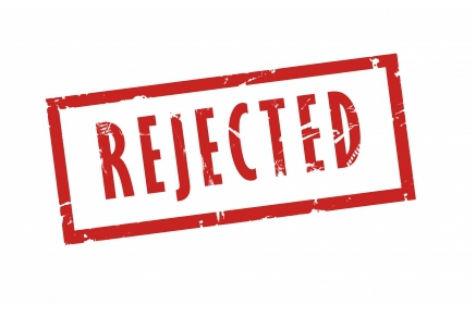Avoid common application mistakes and increase your chances of securing a grant
It is sad but true that many artists spend as much time writing grant applications or looking for income sources as they do pursuing their artistic practice.
Rejection is par for the course but understanding why you are being knocked back is essential to improving your chances of securing a grant next time.
It’s easy to take a rejection letter personally and to see it as a reflection on the worth of your work but sometimes the failure is not in your project but in your application.
You are applying for the wrong grants
In the age of multi arts and mixed media it can sometimes be difficult to figure out which funding category your project fits into. In these cases, the best course of action is to simply call the different funding bodies and ask the professionals.
Australia Council CEO Tony Grybowski says the Australia Council has a large team of workers willing to take enquiries from artists regarding grant categories and how best to apply. ‘Our goal is to make it as easy as possible for artists to put in an application for assessment by the Australia Council,’ says Grybowski.
Yet of the 4,600 grant applications that Australia Council typically receives each year there are always some that are disqualified. ‘I suppose with that volume there is always a small number that for some reason are not eligible. Our mantra is always do your research, talk to our staff, read all the eligibility criteria, and have a look our website and our newsletter Artery about successful applications.’
Common criteria that may exclude you can relate to your age, the number of times you have previously applied that year, whether the proposed project falls inside the published start and end dates, what percentage of your total budget cost you’re asking for and whether the activity you want funded, such as travel, is eligible. In short, read the fine print.
Your writing is not clear or compelling
Joel Stern, a previous panellist on the Asialink Performing Arts Board, says structure is essential to a strong application.
‘There should be coherent through-line that connects the applicant’s existing work, the new idea, and the methodology for pulling it off. Experienced grant writers really understand this equation and are able to structure a tight argument where everything serves the aim of the application. This takes a lot of practice and sometimes some mentoring to get right.’
‘Show don’t tell’ is advice all writers should take to heart. Don’t write about how wonderful your project is going to be: show the panel what you have done in the past, the budget, and the research you have done about this project.
‘Too much hyperbole can be counter-productive,’ says Stern. ‘A good application should explain why the project is important and innovative to a community or to your individual practice. It should have plausible goals and be supported with relevant research and documentation.’
Use of plain English is a must. ‘All the grant assessors want to do is to understand what an artist is trying to achieve, what their idea is, what their vision is and what their experience is and from that, including looking at some support material, they then make an informed artistic assessment about the quality of the application,’ says Grybowski. If your application includes too much technical language and isn’t easy to understand it is more likely to be passed over for something clearer.
If your writing is letting you down consider paying a grant writer, getting some writing tuition or doing a short business-writing course. It will cost you, but you may be spending a little to earn a lot.
You don’t read the question properly
Remember the old school exam advice to read the question carefully? Andrew Tuttle, who runs a grant writing service, recently gave a lecture Free money for musos as part of an Industry Talks program at the Queensland University of Technology.
He says many artists miss out on grants because they don’t match their application to the selection criteria.
‘I think the main error that is made, and it is an easy one to make, is to gloss over small details and to not focus on attention to detail. Assessment panels pay careful attention to aspects of your submission including budgeting, support materials, and to how your application measures against selection criteria listed. The selection criteria in grants are listed for a reason, and it always helps to follow them whenever applicable.’
Tuttle recommends that applicants take a good look at word limits, budget conditions and recommended support materials before starting, and once again before submitting the grant. He also recommends a call to the contact listed in the grant application to check everything is filled out correctly and all the right things have been included.
You are not working the room
Contacts matter and we don’t just mean on the selection committee. Support letters from the right people move you from being an unknown to being on the radar. The decision-makers may not know you, but they might know and trust the person offering you support.
Asking a mentor, teacher or successful peer to endorse you – whether or not the application asks for referees – gives you an advantage and it’s worth keeping a record of people you have worked with or who know your work and asking if you can use their names.
You don’t have to be a constant networker but learn to work the room at openings and relevant events and identify some useful people whom you would like to get to know and might support your applications. Virtual networking through Facebook or Linked In is valuable too.
You are thinking too big too soon
It’s tempting to apply for generous grants that will fund your whole project but several small grants can be easier to get than one big one.
Audio-visual artist Kate Geck has scored several small grants and says grants under $5000 tend to be easier to get. ‘My success rate with small grants is pretty high, but with big grants it’s low. I’ve only ever gotten one big grant, but I’ve probably applied for four or five.’
Once you have had a number of small grants it is easier to move up the ladder and increase the amount you aim for. Last year Geck received a $20,000 City of Melbourne grant for an AV project between 23 artists in Osaka and Melbourne at Signal Arts centre.
You are not seeking feedback
Grant-makers don’t like having to reject applicants but it goes with the territory. They are keen to help you do better next time. Stern suggests seeking feedback from the funding body after a rejection.
‘They are there to support artists and organisations and can usually help you to at least understand where you can improve the application.’
Australia Council workers are happy to discuss your application and reasons for rejection with you. ‘It’s a standardised type of feedback about the competitive nature of the field, whether their application met the criteria and some general comments that may assist them in the future if they choose to apply for a grant in the future,’ says Grybowski.
Before the next funding round, there may also be an information session or workshop. This is not an opportunity to get detailed feedback on your last application but if you have questions about how to do something next time or which option to pursue it’s a good place to find out before your next application.
You are giving up too easily
The competitive nature of funding sometimes results in great projects being rejected. You need to be prepared to try a second or third time for the same grants, though you will want to polish your application again first.
Says Stern: ‘There are always projects that narrowly miss out despite being extremely worthy of support. It’s not a science; you can only hope that panels collectively decide these things in the fairest and most conscientious way possible. If I’m personally forced to choose between two applications that are both equally great I come up with all sorts of formulations in my head. Which project would be a bigger loss if were not to happen? Which project might be able to find support elsewhere? Which could only be supported here? You hope that you make smart decisions and that the projects that miss out might be successful elsewhere or next time round.’
Grybowski similarly encourages applicants not to give up after a rejection. ‘Any artist can apply for up to five individual or different grants each year (through the Australia Council) and some artists have to apply several times before they are indeed successful.’ He acknowledges that the finite resources of Australia Council funding can lead to cases of ‘unfunded excellence’ and hopes the additional cultural funding provided to the Australia Council from the recent national cultural policy will address this issue in the next financial year.
Finally, remember that receiving a grant is not the only way to get a project up and running. Crowd-funding, loans and being your own backer are all good options. Says Stern: ‘It’s good to consider other models and not to rely so much on grants that you’d give up an idea because it’s not funded.’





